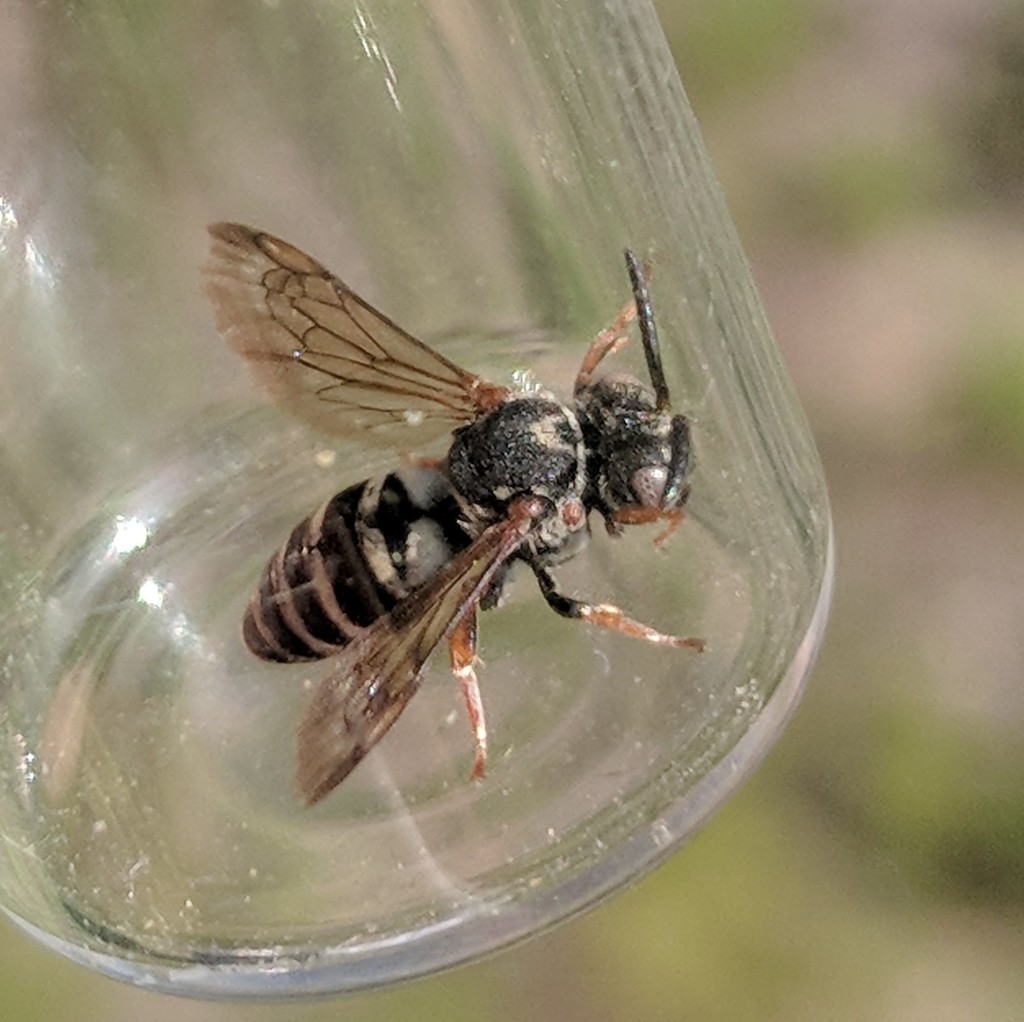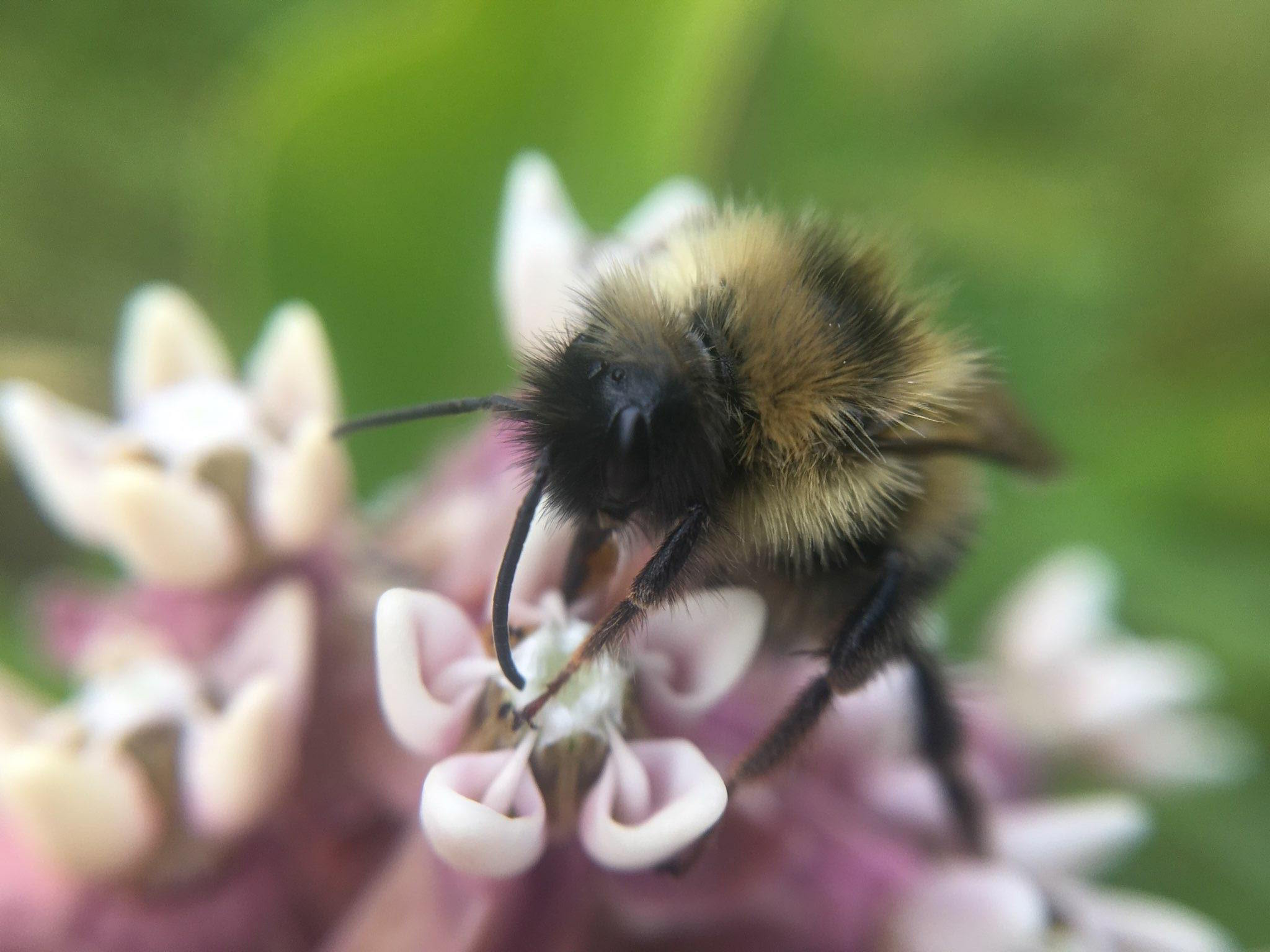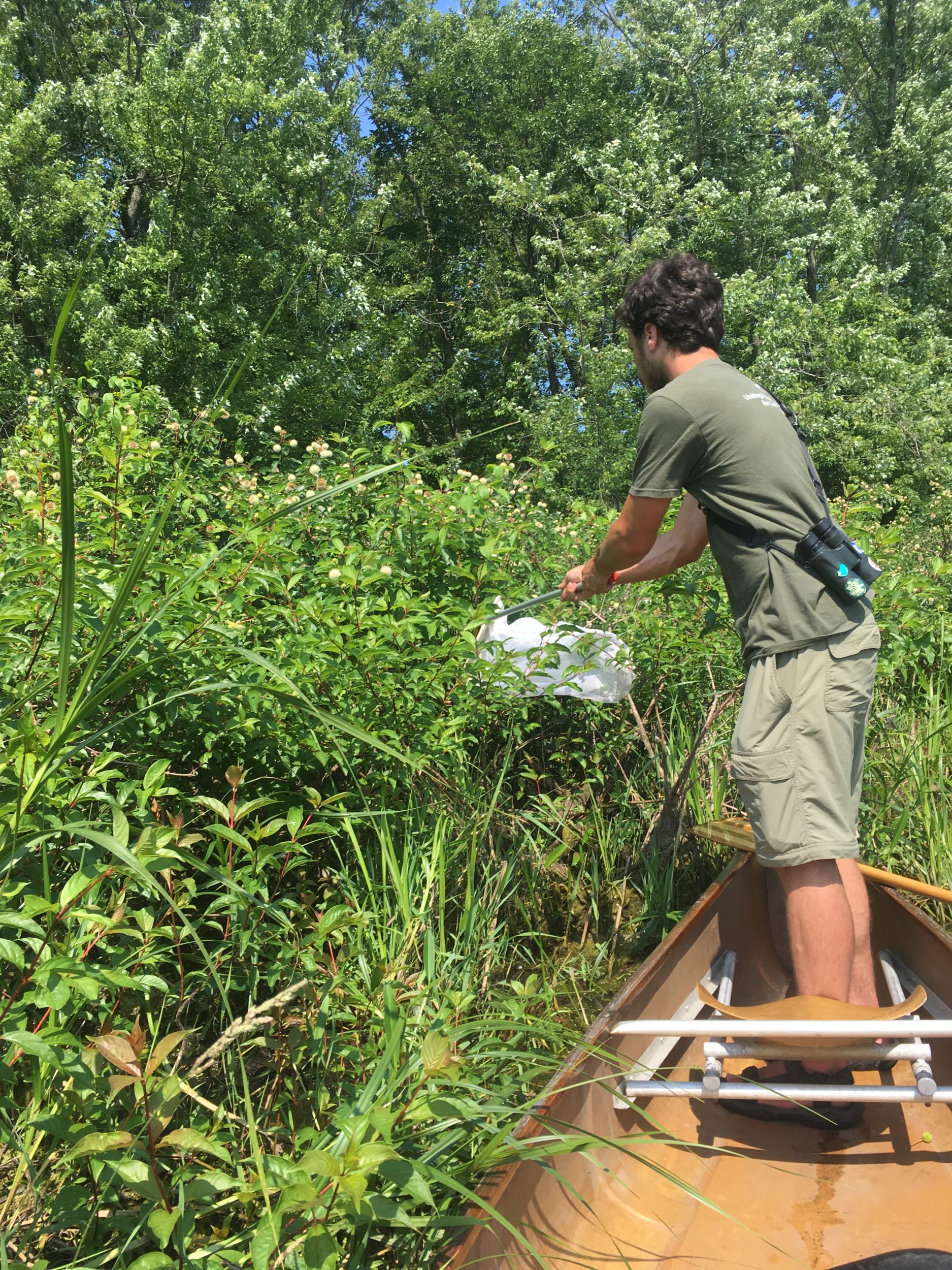
A Canadian Cuckoo Nomad Bee found patrolling a nest aggregation of Colletes sp. This is the first time this species has been documented anywhere in New England! / © Nathaniel Sharp
Throughout the spring and summer, Vermont Center for Ecostudies biologists and citizen scientists alike have been scouring fields, roadsides, gardens, and all places flowers are found surveying bees for the Vermont Wild Bee Survey (VTBees). As different flowers come into bloom, different specialist bees emerge to nectar on a single species or group of flowers. From pickerelweed to loosestrife, sunflower to goldenrod, chasing down these flowers and the bees that associate with them has led to some exciting apine discoveries! The diversity of well-studied taxa such as birds, mammals, reptiles, and amphibians is very well-documented in Vermont, and it is rare for a new species in any of these groups to turn up for the state. However, so little is known about Vermont’s 265+ native bee species that just a few months of surveying around Chittenden county has added 10 new species to the list of bee species found in the state!
A species known as the Parallel-striped Sweat Bee (Halictus parallelus), previously unconfirmed in Vermont, was recently documented by Spencer Hardy along the Winooski River in South Burlington. As coordinator of VTBees, Spencer has traveled throughout Chittenden County coordinating with volunteers, setting out ‘bee bowls’ at survey sites, netting bees from a variety of flowers, and making intriguing discoveries along the way. A particular focus of Spencer’s over the past few weeks has been loosestrife. No, not the purple invasive kind, but native loosestrifes in the genus Lysimachia. These flowers are host to a fascinating genus of bees known as Macropis, which collect oil from loosestrife flowers to provision their young. After hours of searching the delicate yellow blooms of loosestrife at various locations across the county, Spencer finally found a male and female Macropis patellata. Does this mean the genus-specific cuckoo bee Epeoloides pilosulus, which only parasitizes the nests of Macropis, and was thought to be extinct until 2002, could be found in Vermont? It has recently been collected in Connecticut and Nova Scotia—perhaps with some concentrated effort, one of North America’s rarest bees will turn up in Vermont.

A Fernald’s Cuckoo Bumble Bee, one of the rarest bumblebee species in Vermont, nectars on milkweed flowers. / © Spencer Hardy
The species-specific nature of cuckoo bees means that they are often difficult to find, yet several have been collected from Chittenden County sites within the last few months. The Canadian Cuckoo Nomad Bee (Epeolus canadensis) parasitizes bees in the genus Colletes. This species was completely undocumented in New England until Spencer and Citizen Science Outreach Naturalist Nathaniel Sharp captured several at a Colletes nest aggregation in Colchester. Spencer and Nathaniel also discovered a population of the Fernald’s Cuckoo Bumble Bee (Bombus fernaldae) while participating in the Merck Forest & Farmland Center BioBlitz on July 27. This species, one of Vermont’s most rare bumblebees, lays its eggs in the nests of a handful of other bumblebee species. Yet another new bee for the state, a cuckoo bee known as the Laterally-marked Cuckoo Carder Bee (Stelis lateralis), was discovered by a VTBees volunteer in Williston. If you have an interest in volunteering with VTBees, and perhaps making some discoveries of your own, visit the VTBees website for more information.

Citizen Science Outreach Naturalist Nathaniel Sharp nets bees on Buttonbush from the bow of a canoe. / © Spencer Hardy
Recent VTBees expeditions have found Spencer and Nathaniel picking up paddles to explore the flowering plants of Lake Champlain via canoe. While waterlilies are large and beautiful, they don’t seem to attract many bees; pickerelweed, on the other hand, with its spike-shaped masses of blue flowers, attracts sweat bees, bumblebees, and three specialist bees, including a species of bee called Dufourea novaeangliae. After netting at sites such as Sandbar State Park and the mouth of Lewis Creek, this little-known bee has been found to turn up just about anywhere pickerelweed is present. Exciting discoveries like these bode well for the future of VTBees, and we at VCE can only imagine what will be found when we extend our bee surveys across the state, with help from citizen scientists.

Your website is so interesting! I value each entry. Even though I am a biology teacher (I tutor now, online) I found that I don’t know as much as I should about bees! I learn something every time. And the photographs !!! The one on today’s entry of the bumble bee is marvelous! My garden may be small but I make sure it is pollinator friendly. Two days ago someone asked me how to make his garden as “happy” as mine. He was intrigued by the bees and butterflies flying among the plants. I explained that I don’t use pesticides at all and why, I plant pollinator friendly flowers. Hopefully I made a new convert to pollinator friendly gardens.